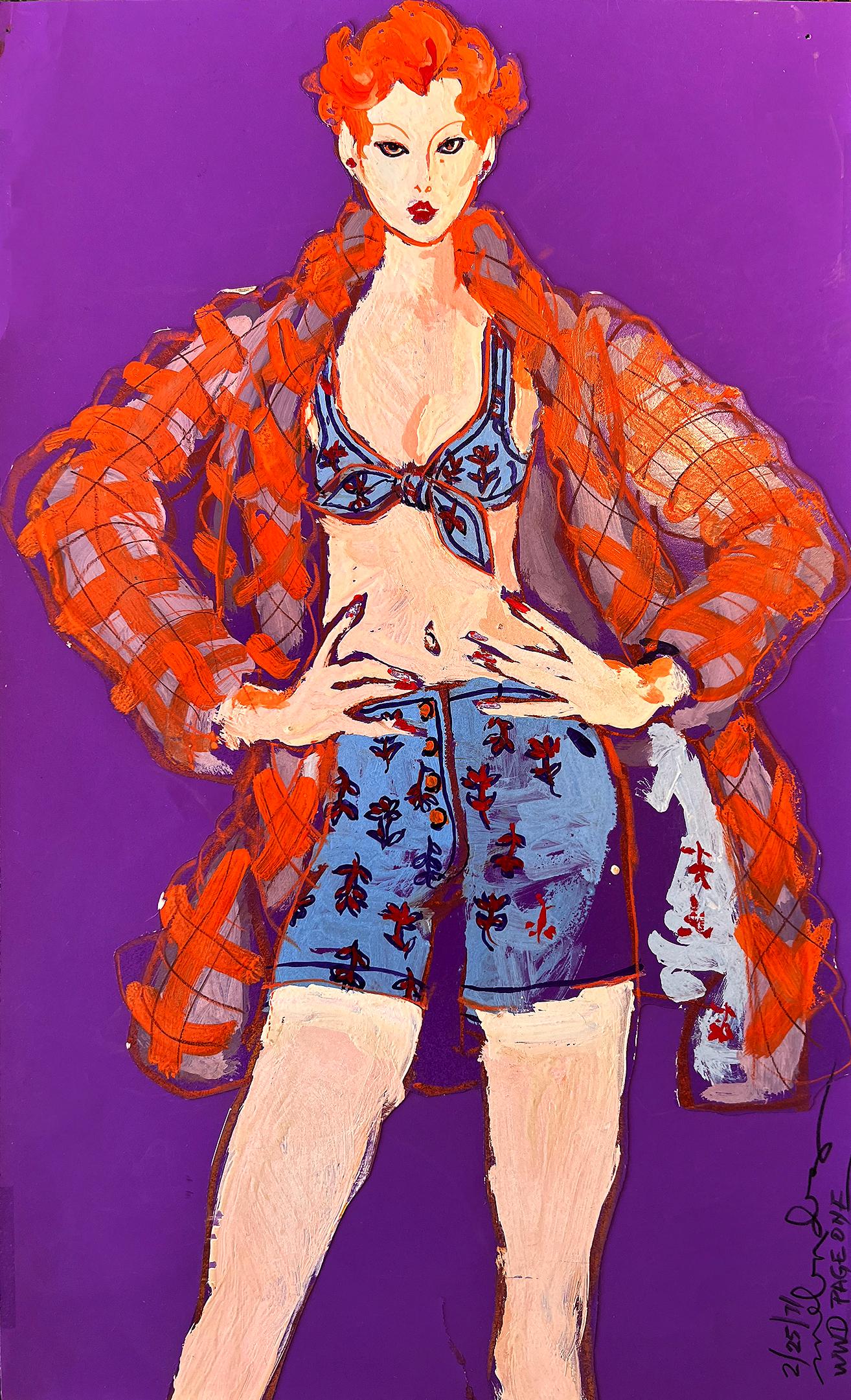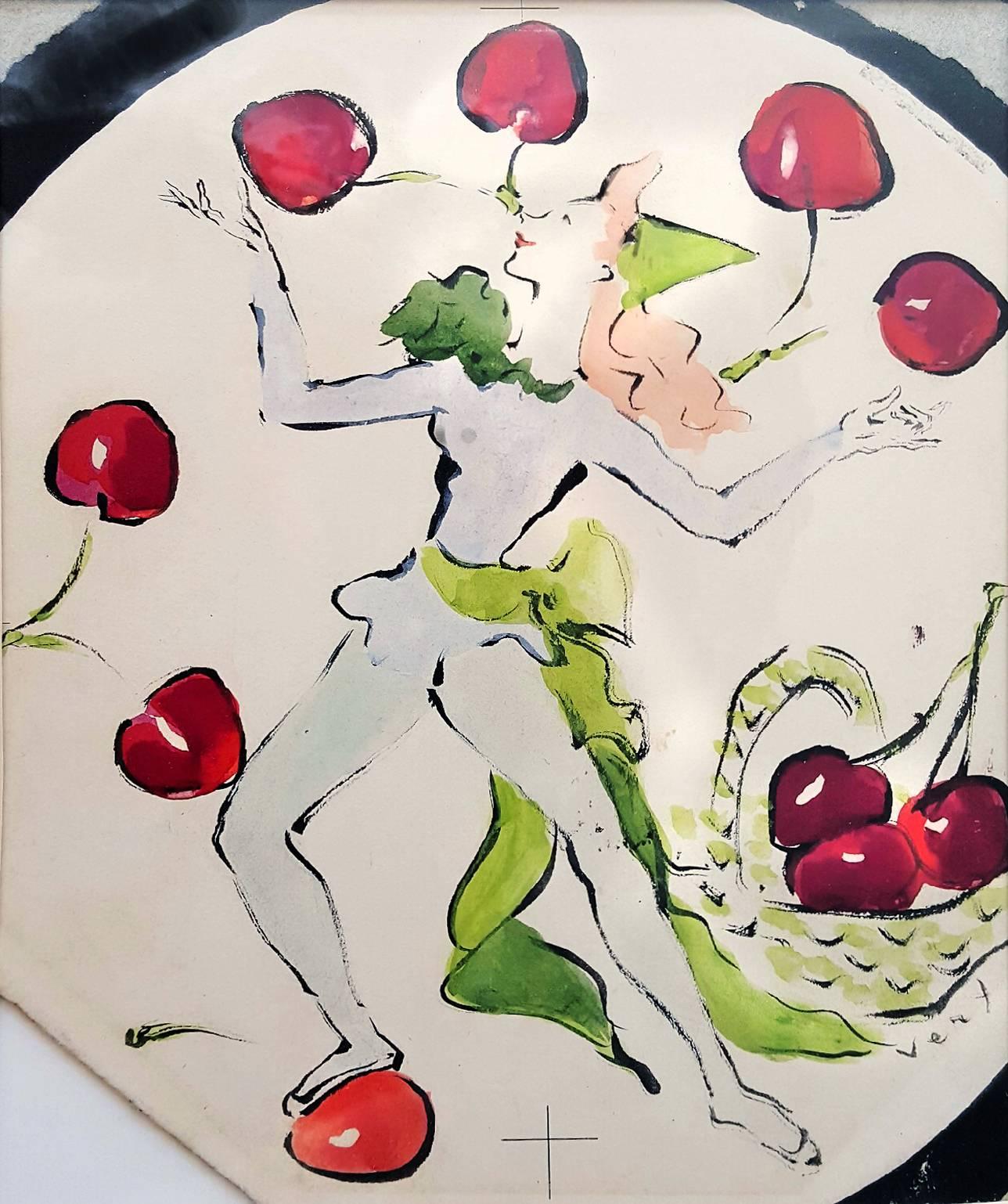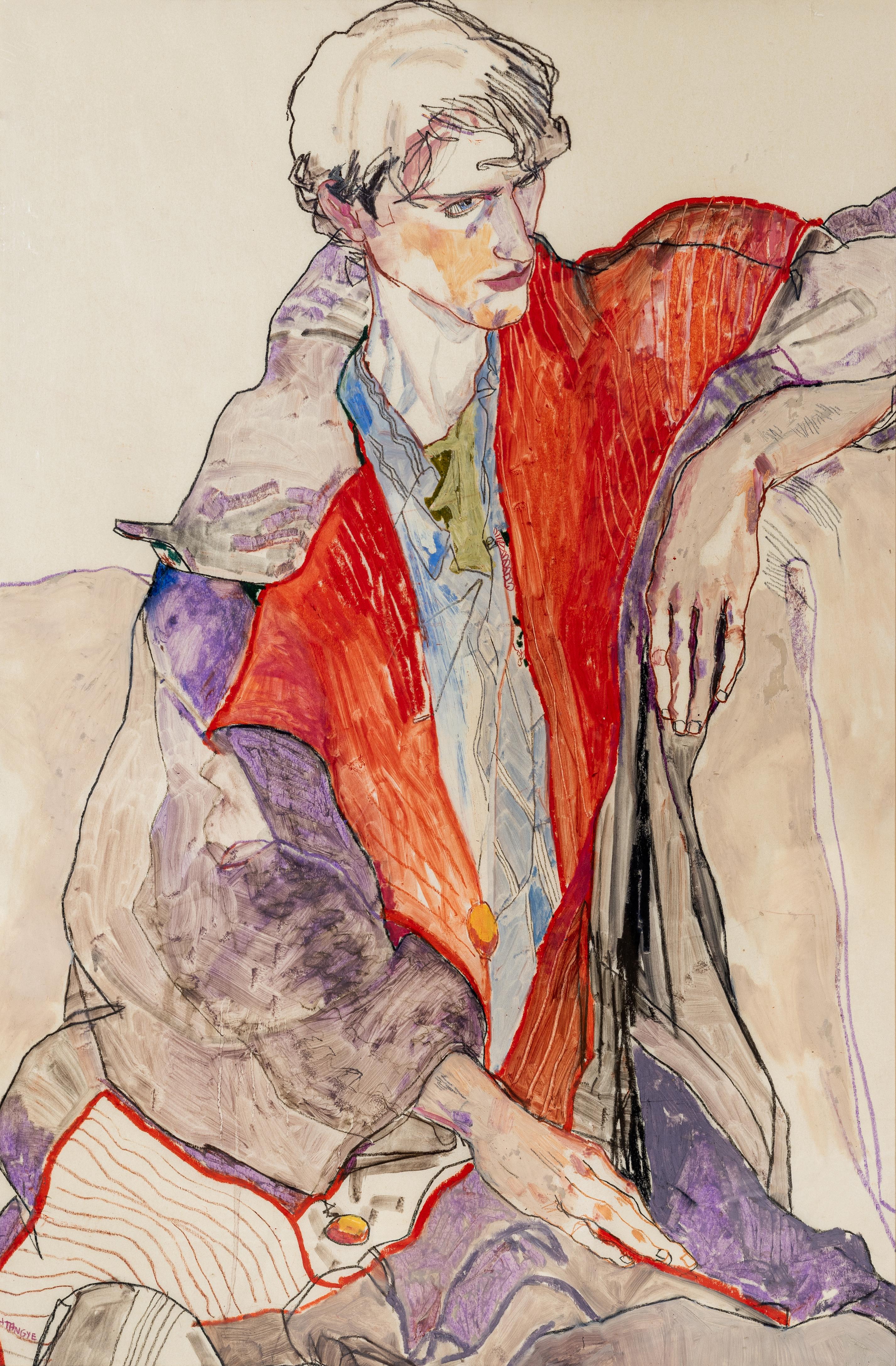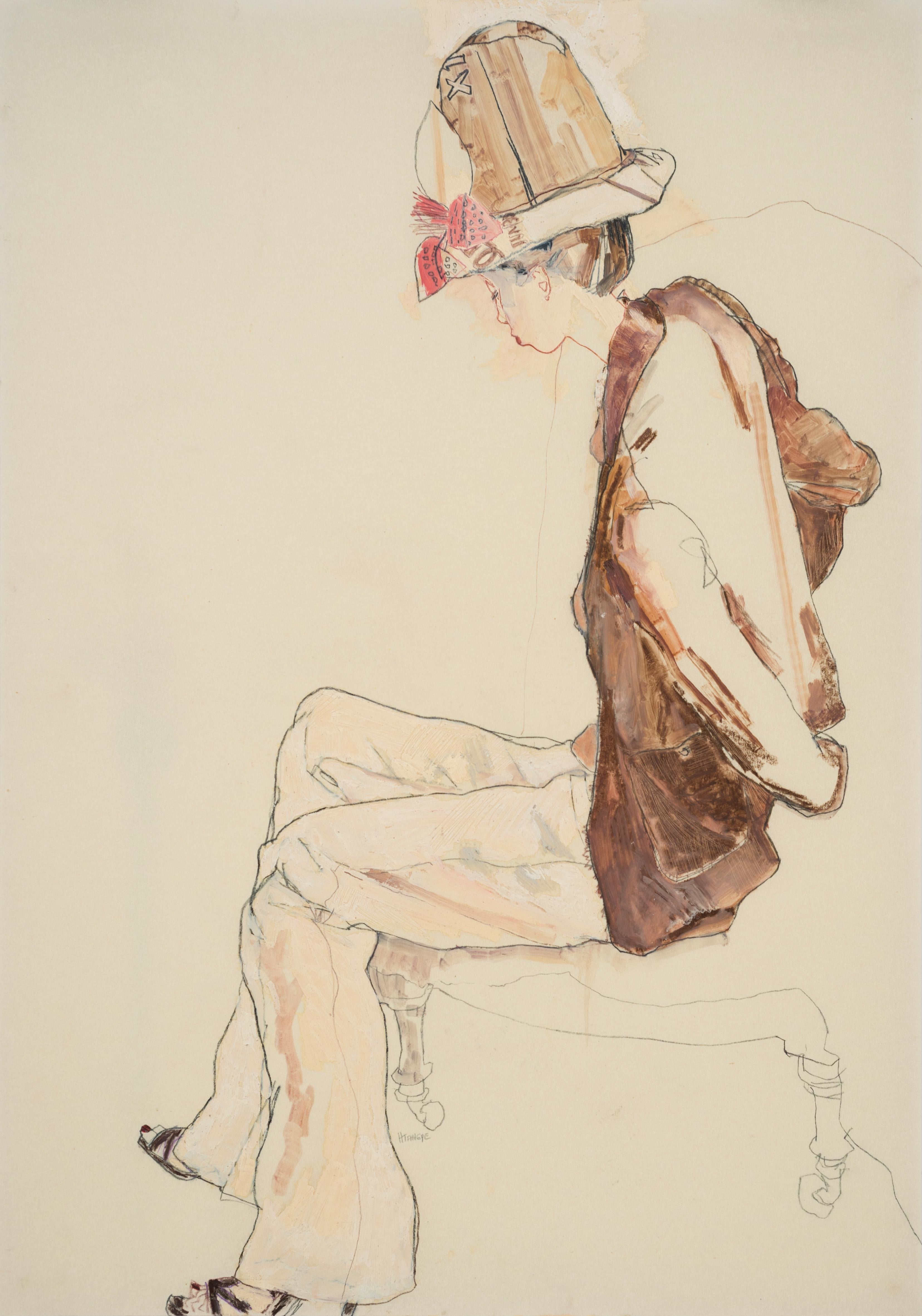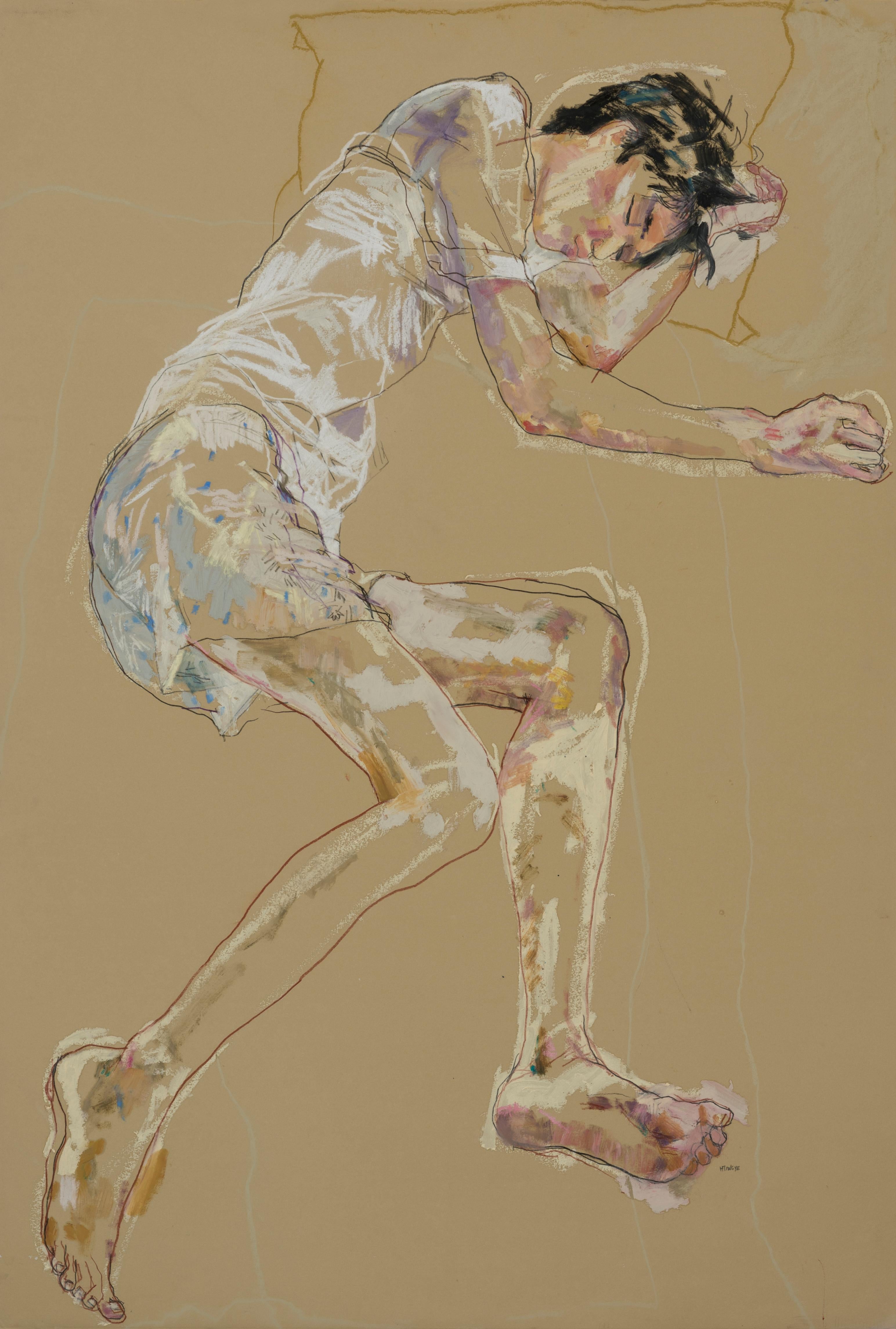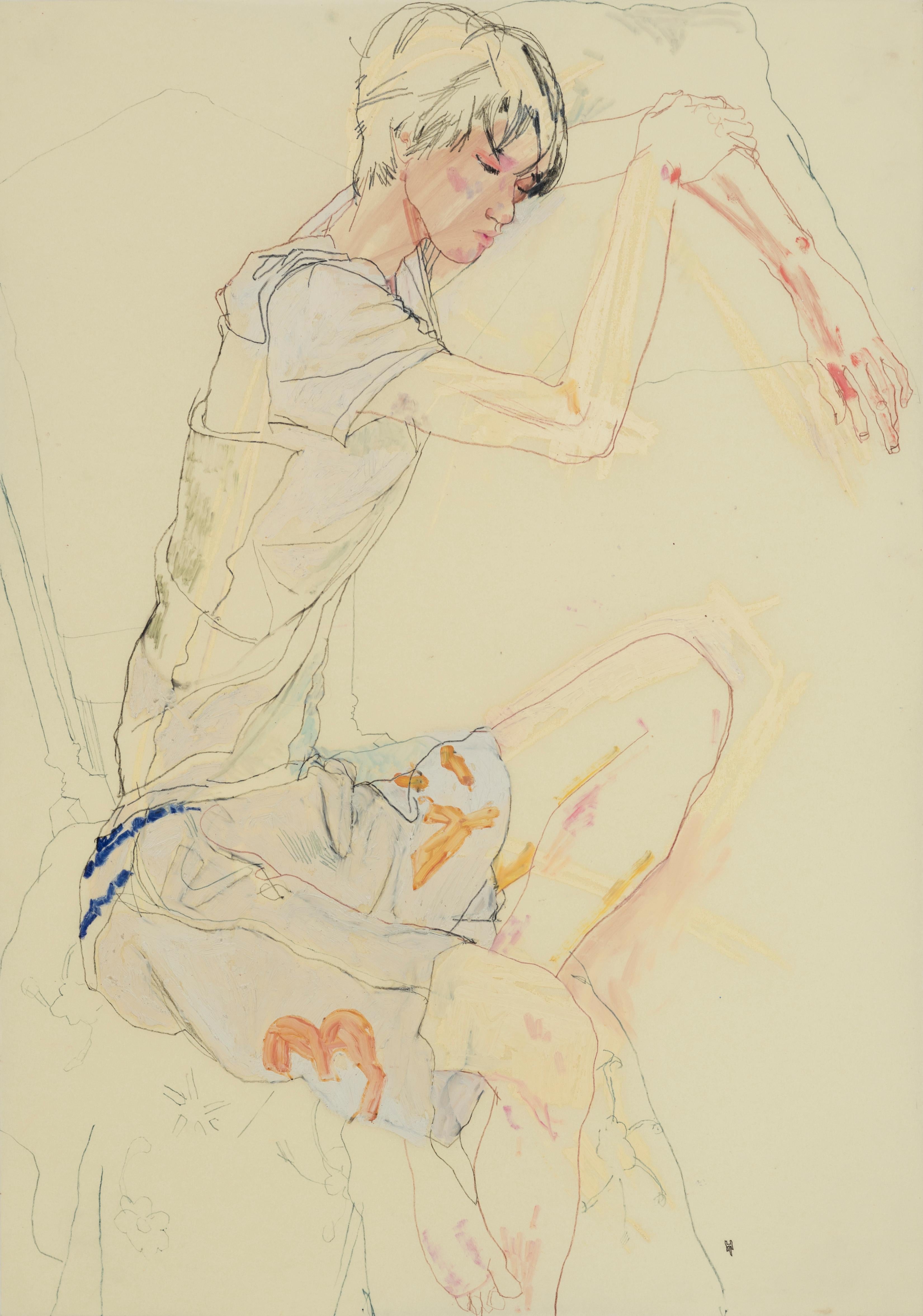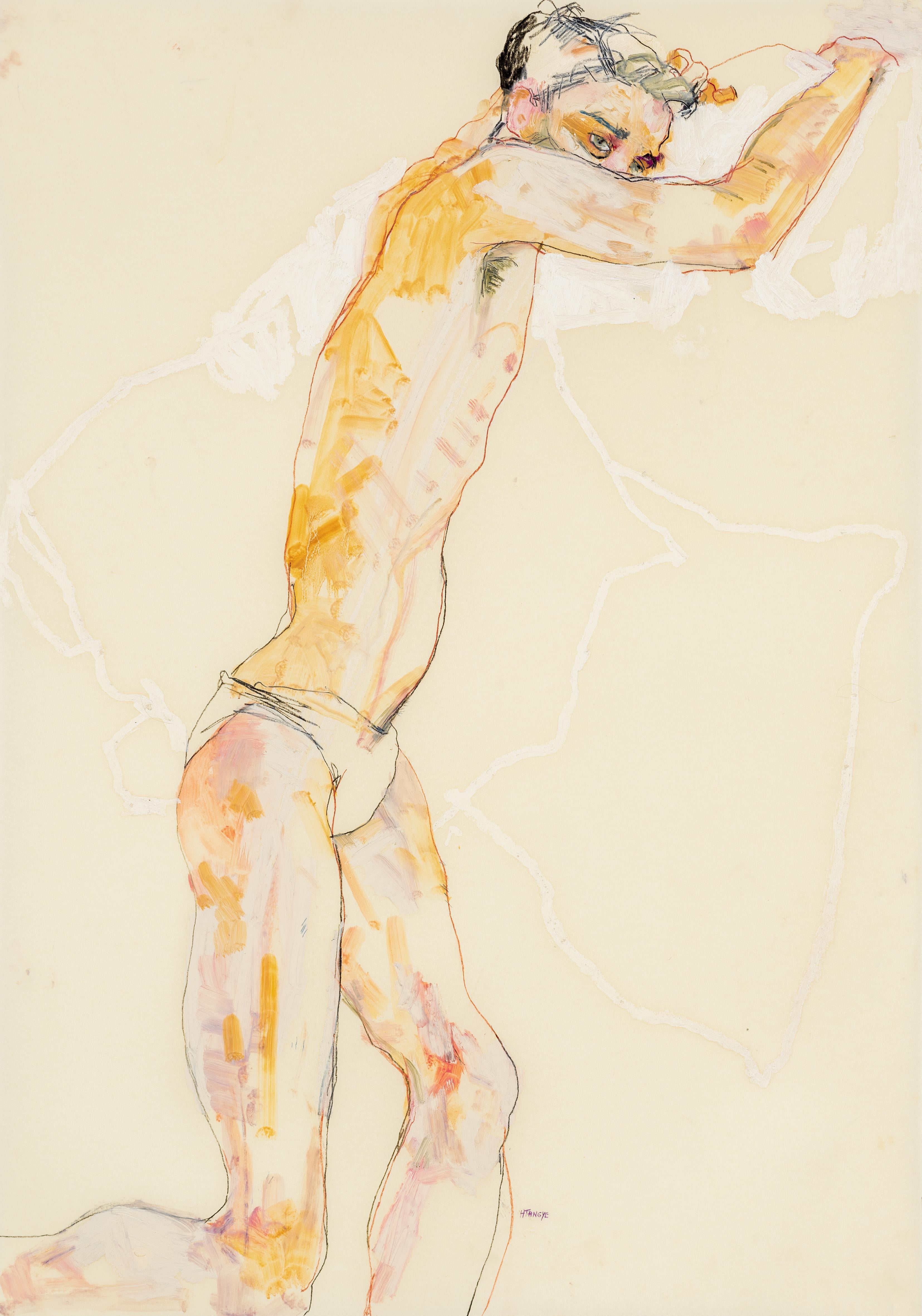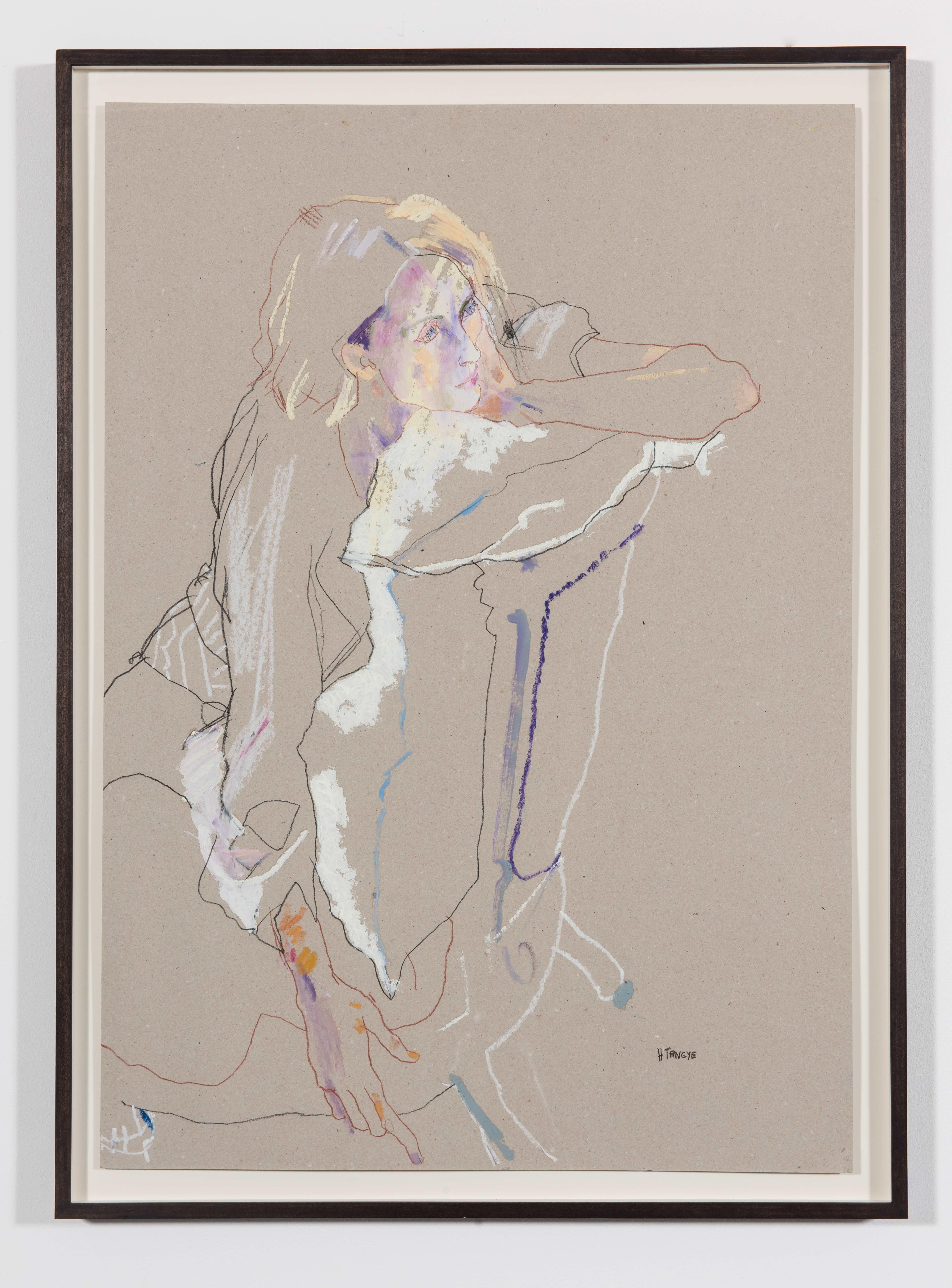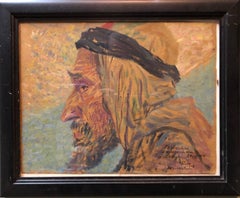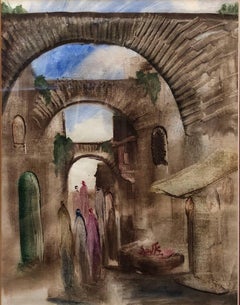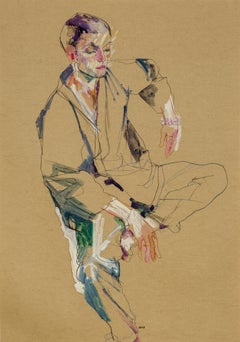
Original Deco Theatre Costume Illustration "Katinka" Gouache Painting, Drawing
View Similar Items
Want more images or videos?
Request additional images or videos from the seller
1 of 11
Marcel VertèsOriginal Deco Theatre Costume Illustration "Katinka" Gouache Painting, Drawing
About the Item
- Creator:Marcel Vertès (1895 - 1961, Hungarian)
- Dimensions:Height: 17.75 in (45.09 cm)Width: 13.5 in (34.29 cm)
- Medium:
- Movement & Style:
- Period:
- Condition:frame has minor wear. size includes frame. 13.75 X 10.25 sight size.
- Gallery Location:Surfside, FL
- Reference Number:1stDibs: LU3823013823
About the Seller
4.9
Platinum Seller
These expertly vetted sellers are 1stDibs' most experienced sellers and are rated highest by our customers.
Established in 1995
1stDibs seller since 2014
1,550 sales on 1stDibs
Typical response time: 1 hour
More From This SellerView All
- Rare Oil Painting Arab Man Bezalel School Jerusalem 1913, JudaicaBy Isaac Lichtenstein 1Located in Surfside, FLExtremely rare work of art from the early Bezalel School of Boris Schatz in Ottoman Palestine. it depicts an Orientalist Arab Sheik in traditional Headwear. YITSKHOK LIKHTENSHTEYN ...Category
Early 20th Century Post-Impressionist Figurative Paintings
MaterialsPaper, Oil Pastel, Oil
- Chicago Jewish Modernist Judaica Painting Simchat Torah WPA Artist Israeli FlagsBy Alexander Raymond KatzLocated in Surfside, FLThis has young ISraeli pioneers dancing with the flag as typical of works of the late British mandate Palestine era early state of Israel. Genre: Modern Subject: Figurative (stained glass style) Medium: Mixed media gouache on paper Hand signed lower left Alexander Raymond Katz, Hungarian / American (1895 – 1974) Alexander Raymond Katz was born in Kassa, Hungary, and came to the United States in 1909. He studied at the Art Institute of Chicago and the Chicago Academy of Fine Arts. In the late 1920s, he worked as a director of the Poster Department at Paramount Studios. He was appointed the Director of Posters for the Chicago Civic Opera in 1930. During the Great Depression, notable architect Frank Lloyd Wright urged Katz to become a muralist. In 1933, he was commissioned to paint a mural for the Century of Progress exposition in Chicago. In 1936, he painted the mural History of the Immigrant for the Madison, Ill., post office. Katz’s works were included in various exhibitions and now are part of several museum collections, including those of the Art Institute of Chicago; Corcoran Gallery of Art, Washington, D.C.; and the Jewish Museum, New York. His murals, bas-reliefs and stained glass designs adorn more than 200 Jewish synagogues in the United States. Katz and other Jewish artists in Chicago who expressed Jewish and Biblical themes were inspired by the artist Abel Pann (1883-1963). Pann, who is regarded as the leading painter of the Land of Israel, exhibited in the Art Institute of Chicago in 1920. Early in his career, Katz began to explore the artistic possibilities inherent in the characters of the Hebrew alphabet. He developed aesthetic and philosophical interpretations of each letter and became the leading innovator and pioneer in the field of Hebraic art. Katz applies this concept in the woodcut Moses and the Burning Bush. Hebrew letters appears in Moses’ head, his cane and inside the flame. The initial of Moses’ name crowns his head. The letter in the flame is the first letter of the name of God. A combination of images and Hebrew letters appeared commonly in illustrations of the scene Moses and the Burning Bush in the Haggadah, the book of Passover. The symbolism of the burning bush corresponds to the motifs of A Gift to Biro-Bidjan. Among the fourteen participating artists were notable Chicago modernists Todros Geller, Mitchell Siporin...Category
Mid-20th Century Modern Figurative Paintings
MaterialsPaper, Gouache
- Jerusalem Old City Landscape, Expressionist Judaica Israeli PaintingBy Andre ElbazLocated in Surfside, FLIn this painting the artist uses gestural brushstrokes, which causes distortion and exaggeration for emotional effect. Andre Elbaz uses as his subject figures walking in old city Jerusalem. André Elbaz (born April 26, 1934, El Jadida, Morocco) is a famous Moroccan painter and filmmaker. Elbaz studied art and theatre in Rabat and Paris from 1950 to 1961. He started painting only at the age of 21, until which age he had been interested mainly in theatre. A few years later, he managed to combine his two passions into a new approach in art-therapy, inventing together with his wife, a psychiatrist, the Pictodrame, which brought him world recognition. His first exhibition, which was very successful, took place in Casablanca in 1961 and earned him an appointment as Professor at the Beaux-Arts school in Casablanca. Years later, in 1976, he exhibited his paintings at the Tel-Aviv Museum. In parallel to his career as a painter, Elbaz is also known as a filmmaker. He produced several short films in France, Canada and the United States. One of them, La nuit n'est jamais complète (The night is never complete), won a prize at the "5th Biennale de Paris in 1967". Among the themes chosen for the many films he produced, there was a short one about the Warsaw Ghetto uprising, as well as a series of drawings entitled Seuls (Alone), with texts written by both Elie Wiesel...Category
20th Century Expressionist Figurative Paintings
MaterialsPaper, Gouache
- Original Graphic Hungarian Illustration Art Emma Heinzelmann Children's Book ArtLocated in Surfside, FLOriginal vintage gouache painting on poster board by Emma Heinzelmann (Hungarian, born 1930). Hungarian Peasant art, children fairytale themes, in psychedelic pop colors of the era. This framed painting depicts figures, a rooster and angels in flying above. Artist signature on farm gate. Housed in chrome mid century frame. Framed: 19.5 X 25.5 image is 15 X 21. Emma Heinzelmann ( Nyírbátor , March 14 , 1930 - ) Munkácsy Prize-winning Hungarian graphic designer and illustrator. Heinzelmann is a Hungarian children's book illustrator and graphic poster artist, who started her career during the 1950’s. She has a very unique drawing style that resembles children’s book illustrations. Working in psychedelic pop colors of the era. She Initially she studied to be a costume designer but she soon turned to graphic design. She graduated in 1950 from the clothing design department at the Junior High School in Török Pál Street which operated under the name Szépmíves Lyceum from 1946 to 1950. His master was György Farkas, a ceramicist, painter and sculptor. She creates her compositions using mainly watercolor and gouache paint. She often worked on illustrations for children’s books, since her style fits their themes. Her posters show the same playful Hungarian Folk Art style. She has produced artwork in almost all areas of applied graphics. posters, commemorative cards, designed album covers, postcards, advertising graphics, slide films, animation and cartoons. Her drawings were published in Dörmögő Dömötör and Kisdobos among others as well as in children's magazines. An entire generation of children grew up with her book illustrations, reading the fairy tales of Wilhelm Hauff or Hans Christian Andersen. Her story books and drawings are known well beyond our borders. She illustrated nearly 80 storybooks. She is a contemporary of Maurice Sendak and William Steig. Her work is of the same genre as the iconic Polish Cyrk poster artists. In her original fine art graphics grotesque and bitter elements often prevail, her figures are playfully ironic. Her drawings are made in a variety of ways, from pencil drawings to watercolor painting to collage techniques, from decorative spot effects to lace-like line drawings. She is no stranger to a kind of Art Nouveau influence, but it is always individual. It was never beautiful, but over the years its color scheme changed, thus confirming the lines of József Somogyi quoted earlier. She had several individual exhibitions, and for more than 10 years as a member of the Papp-Gábor group, her works could be seen in Dorottya Street. In 2009 , the book of art historian András Székely was published by Holnap Könyvkiadó under the title Emma Heinzelmann: fairy tales in the drawing. Awards and recognitions Lot Prize (International Poster Biennale, Warsaw) (1972) Ministry of Culture Award (1977, 1979) Brno Graphic Biennale (Bronze Award) (1980) Worker's Award (1984) Children's Book of the Year Award (1984) IBBY Andersen Diploma (1988) Hamburg Lifetime Achievement Award (1990) Albert Star Award (1992) Noémi Ferenczy Award (2005) Munkácsy Award (1984) Solo Exhibitions: Thought Bookstore, Budapest (1965) Cultural Center, Nyíregyháza (1974) Little Gallery, Komárom (1982) Art Gallery, Budapest. (1990) Vác (2010) Selected group exhibitions: International Children's Book Fair and Exhibition, Bologna (1971-1975) International Graphic Biennale, Brno (1966-1985) BIB (Children's book illustration biennial), Bratislava (1970-1985) XXXVI. Venice Biennale, Venice (1972) ARC. International Poster Biennale, Warsaw (1972) International Poster Triennale (B) (1972-1974) Weekdays, graphic exhibition, (1975) Calligraphy and typography, Institute of Cultural Relations, Budapest (1977) "Falrahányt pea", graphic exhibition, Institute of Cultural Relations, Budapest.(1978) International Poster Triennale (B) (1978) National Poster Exhibitions, Art Gallery, Budapest (1978)(1980) International Poster Exhibition (IR) (1979) Slide films: Fairy tales with Emma Heinzelmann's drawings: Under the Shore (1981) Goose Party (1981) Take a Little Trumpet (1982) The Bremen Town...Category
Mid-20th Century Folk Art Figurative Paintings
MaterialsGouache
- Original Graphic Hungarian Illustration Art Emma Heinzelmann Children's Book ArtLocated in Surfside, FLOriginal vintage gouache painting on poster board by Emma Heinzelmann (Hungarian, born 1930). Hungarian Peasant art, children fairytale themes, in psychedelic pop colors of the era.This painting that depicts figures including a crowned pig, and a princess in a bed. Artist signature above bed. Housed in chrome mid century frame. Framed: 19.5 X 25.5 image is 14.75 X 21.25. Emma Heinzelmann ( Nyírbátor , March 14 , 1930 - ) Munkácsy Prize-winning Hungarian graphic designer and illustrator. Heinzelmann is a Hungarian children's book illustrator and graphic poster artist, who started her career during the 1950’s. She has a very unique drawing style that resembles children’s book illustrations. Working in psychedelic pop colors of the era. She Initially she studied to be a costume designer but she soon turned to graphic design. She graduated in 1950 from the clothing design department at the Junior High School in Török Pál Street which operated under the name Szépmíves Lyceum from 1946 to 1950. His master was György Farkas, a ceramicist, painter and sculptor. She creates her compositions using mainly watercolor and gouache paint. She often worked on illustrations for children’s books, since her style fits their themes. Her posters show the same playful Hungarian Folk Art style. She has produced artwork in almost all areas of applied graphics. posters, commemorative cards, designed album covers, postcards, advertising graphics, slide films, animation and cartoons. Her drawings were published in Dörmögő Dömötör and Kisdobos among others as well as in children's magazines. An entire generation of children grew up with her book illustrations, reading the fairy tales of Wilhelm Hauff or Hans Christian Andersen. Her story books and drawings are known well beyond our borders. She illustrated nearly 80 storybooks. She is a contemporary of Maurice Sendak and William Steig. Her work is of the same genre as the iconic Polish Cyrk poster artists. In her original fine art graphics grotesque and bitter elements often prevail, her figures are playfully ironic. Her drawings are made in a variety of ways, from pencil drawings to watercolor painting to collage techniques, from decorative spot effects to lace-like line drawings. She is no stranger to a kind of Art Nouveau influence, but it is always individual. It was never beautiful, but over the years its color scheme changed, thus confirming the lines of József Somogyi quoted earlier. She had several individual exhibitions, and for more than 10 years as a member of the Papp-Gábor group, her works could be seen in Dorottya Street. In 2009 , the book of art historian András Székely was published by Holnap Könyvkiadó under the title Emma Heinzelmann: fairy tales in the drawing. Awards and recognitions Lot Prize (International Poster Biennale, Warsaw) (1972) Ministry of Culture Award (1977, 1979) Brno Graphic Biennale (Bronze Award) (1980) Worker's Award (1984) Children's Book of the Year Award (1984) IBBY Andersen Diploma (1988) Hamburg Lifetime Achievement Award (1990) Albert Star Award (1992) Noémi Ferenczy Award (2005) Munkácsy Award (1984) Solo Exhibitions: Thought Bookstore, Budapest (1965) Cultural Center, Nyíregyháza (1974) Little Gallery, Komárom (1982) Art Gallery, Budapest. (1990) Vác (2010) Selected group exhibitions: International Children's Book Fair and Exhibition, Bologna (1971-1975) International Graphic Biennale, Brno (1966-1985) BIB (Children's book illustration biennial), Bratislava (1970-1985) XXXVI. Venice Biennale, Venice (1972) ARC. International Poster Biennale, Warsaw (1972) International Poster Triennale (B) (1972-1974) Weekdays, graphic exhibition, (1975) Calligraphy and typography, Institute of Cultural Relations, Budapest (1977) "Falrahányt pea", graphic exhibition, Institute of Cultural Relations, Budapest.(1978) International Poster Triennale (B) (1978) National Poster Exhibitions, Art Gallery, Budapest (1978)(1980) International Poster Exhibition (IR) (1979) Slide films: Fairy tales with Emma Heinzelmann's drawings: Under the Shore (1981) Goose Party (1981) Take a Little Trumpet (1982) The Bremen Town...Category
Mid-20th Century Folk Art Figurative Paintings
MaterialsGouache
- Americana, Lawyer in Court, Politician, Gouache Painting WPA Art William GropperBy William GropperLocated in Surfside, FLWilliam Gropper Original Gouache on Paper Hand signed lower right 33.5 x 27.5 image 26 x 20.5 The New-York born artist William Gropper was a painter and cartoonist who, with caricature style, focused on social concerns, and was actively engaged in support of the organized labor movement throughout his career. This original watercolor drawing is done in the iconic style of the artist's oeuvre. Born to Harry and Jenny Gropper in 1897, William was raised in New York City's Lower East Side. His parents were Jewish immigrants from Romania and Ukraine, and young William grew up in relative poverty, watching his family struggle to achieve that sought-after American dream. His father, a bright and college-educated man, was unable to find employment that worthy of his intellect. His mother, meanwhile, worked as a seamstress from home. Coupled with the devastating loss of an aunt to the infamous Triangle Factory fire of 1911, significant childhood factors created the foundation that led to Gropper’s exploration of the American experience. Early on, Gropper displayed an extraordinary, natural skill for art. By 1912, he was already studying under the instruction of George Bellows and Robert Henri at the Ferrer School in Greenwich Village. During his time at school, Gropper was also awarded a prestigious scholarship to study at the National Academy of Design. However, he refused to fit into convention and was swiftly expelled from the Academy. After his expulsion, Gropper returned home to help financially by assisting his mother and taking a shop position. However, he didn't abandon art academia and soon presented a portfolio to the New York School of Fine Art which earned him a scholarship for study. Gropper obtained his first significant job as a cartoonist for the New York Tribune in 1917. While working as a staff cartoonist for the Tribune, he also contributed drawings to publications like Vanity Fair, New Masses, The Nation, and Freiheit. His interest in the welfare of the American worker, class inequality, and social injustice was central in his work. After publishing the graphic novel Alley Oop in 1930, Gropper's illustration career extended well into the decade. However, he was never exempt from controversy, and his 1935 Vanity Fair cartoon; prompted anger from the Japanese government. As an involved labor organizer and Social Realist activist, Gropper continued to bring attention to his radical reputation with visits to the Soviet Union and Poland. However, his concern with European politics and U.S. social causes didn't slow down his artistic career, and by the late 1930s, he had produced significant murals for American cities like Washington D.C. His 1938 mural Construction of a Dam was commissioned for the Department of the Interior and represents the Social-Realism style that depicts experiences of the worker and everyday societal life. Measuring at a staggering 27ft by 87ft, the piece portrays muscular, robust American laborers scaling rocky hillsides, building infrastructure, and operating heavy machinery. The mural feels undeniably American with golden scenery, denim blues, and steely gray colors. Gropper fits perfectly into Social-Realism because the style exhibits an illustrative flair with strong lines and simple, bold hues. The inspiration for Construction of a Dam sprang from his 1937 travels to the poverty-stricken Dust Bowl area. The trip was sponsored by a Guggenheim Foundation Fellowship, and his drawings of the Grand Coulee and Boulder Dams...Category
Mid-20th Century Modern Figurative Paintings
MaterialsInk, Watercolor, Gouache
You May Also Like
- Redheaded Model Purple Fashion Illustration for Women's Wear DailyLocated in Miami, FLRedheaded model wearing Traina Sport by Kay Unger and Jesper Nyeboe. Illustration published on the cover of Women's Wear Daily, February 25, 1971. Gouache o...Category
1970s Post-Impressionist Figurative Drawings and Watercolors
MaterialsPaper, Gouache
- Cherry DancerBy Marcel VertèsLocated in Miami, FLCherry Dancer Marcel Vertes French, 1895-1961 Beautiful girl juggling cherries Work is round but is shown in a square frame and some of the artworks edge is exposed Description: ...Category
1930s Post-Impressionist Figurative Drawings and Watercolors
MaterialsGouache
- Oleg (Kimono), Mixed media on ochre parchment paperBy Howard TangyeLocated in London, GBHoward Tangye (b.1948, Australia) has been an influential force in fashion for decades. Lecturing at London’s Central Saint Martins for 35 years, including 16 years as head of BA Wom...Category
2010s Contemporary Figurative Drawings and Watercolors
MaterialsPaint, Paper, Parchment Paper, Charcoal, Crayon, Oil Crayon, Oil Pastel,...
- Jake II (Red coat), Mixed media on Pergameneta parchmentBy Howard TangyeLocated in London, GBHoward Tangye (b.1948, Australia) has been an influential force in fashion for decades. Lecturing at London’s Central Saint Martins for 35 years, including 16 years as head of BA Wom...Category
2010s Contemporary Figurative Paintings
MaterialsPaint, Paper, Parchment Paper, Charcoal, Crayon, Oil Crayon, Oil Pastel,...
- Maria Nishio (Profile - Browns), Mixed media on Pergamenata parchmentBy Howard TangyeLocated in London, GBHoward Tangye (b.1948, Australia) has been an influential force in fashion for decades. Lecturing at London’s Central Saint Martins for 35 years, including 16 years as head of BA Wom...Category
2010s Contemporary Figurative Drawings and Watercolors
MaterialsOther Medium, Paint, Paper, Parchment Paper, Chalk, Charcoal, Crayon, Oi...
- Matthew (Two Figures, Overlapping), Mixed media on ochre parchmentBy Howard TangyeLocated in London, GBHoward Tangye (b.1948, Australia) has been an influential force in fashion for decades. Lecturing at London’s Central Saint Martins for 35 years, including 16 years as head of BA Wom...Category
2010s Contemporary Figurative Paintings
MaterialsPaint, Paper, Parchment Paper, Charcoal, Crayon, Oil Crayon, Oil Pastel,...
Recently Viewed
View AllMore Ways To Browse
Vintage Chanel Painting
Vintage Vogue Fashion Illustrations
Art Deco Circus
Latin Quarter
Marcel Vertes
Original Vintage Moulin Rouge
Art Deco Cocteau
Erte New York
Chanel Premiere
Toulouse Lautrec Moulin Rouge
Jean Cocteau Pencil Drawing
Dior Poiret
Museum Schiaparelli
Chanel 1930 Fashion
Fashion Illustrations 1920s
Original 1920s Fashion Drawing
Paintings Cossacks
Chanel 1961
